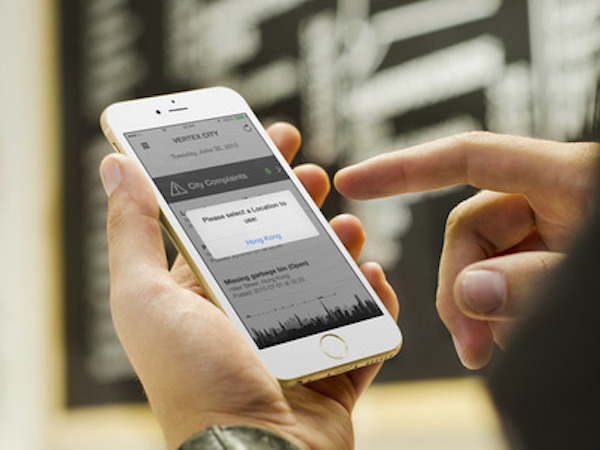Every year, more consumer technologies find their way into government agencies where they can help improve service delivery to citizens. But a few tools especially stand out for their ability to support innovation and potential for broader application. These include open data tools, geographic information systems (GIS), mobile strategies, gamification and wearable technology.
“I think that it all rolls back into a general theme that we’re seeing in the state marketplace – and that’s moving into the federal marketplace even – which is what we’ve termed ‘government your way,’ delivering services in the direction that citizens want and need them,” said Angela Fultz Nordstrom, a vice president at the National Information Consortium, an e-government services provider.
“I think that it’s a better understanding of what government can deliver.”
Traditionally, the thought was that to generate change, government had to start with large back-end systems, but now it’s clear that small changes can have a huge impact. Take open data, for instance. Although more governments opened their data in 2014 – 80 percent of the largest 50 cities have open data programs – maintaining open data is still out of reach for some, according to Kin Lane, an application programming interface (API) evangelist.
In cases where governments have limited resources, officials should focus on opening one crucial data set rather than everything, according to Ashley Fruechting, director of strategic initiatives at Vision Internet, a government website developer.
Prairie Village, Kan., for example, focused on financial data by creating PV Checkbook, an electronic checkbook that lets residents see how the city spends its money. And New Haven, Conn., used OpenGov.com’s web-based financial visualisation software to make its budget and financial data more accessible by presenting it in a user-friendly, interactive manner.
From our partners:
While smaller agencies may not be able to make a big splash by opening all their data, taking incremental steps can help them “make the most out of what they have, Fruechting said.
Plus, open data platforms are making it easier for state and local agencies to manage their information. The NuData open cloud platform for Drupal-powered sites is available for self-hosting on an open-source platform or as a turnkey data publishing solution. And Acella’s CivicData cloud-based open data portal combines data from official government sources and public users, providing researchers one place to find multiple data sets.
GIS can be an important tool for smaller governments that want to make big improvements. In Grand Forks, N.D., officials added a fall leaf collection page with a color-coded map showing where crews were headed, while Santa Clara, Calif., applied its traffic cam information to GIS so that law enforcement could have a better understanding of traffic during home games of the San Francisco ’49ers, which are based there.
“GIS used to be its own stand-alone process,” Nordstrom said. But now states can apply data to those maps.
Fairfax County, Va., went live this past spring with a system that integrates search engine technology with a new Police Events application that creates visualisations of search results in map form.
Meanwhile, Buffalo, N.Y., analysed its 311, law enforcement and demographic data to create a density map of different complaints that helps officials determine which neighbourhoods need immediate help.
Similarly, North Carolina is exploring ways to use cloud-based software tools to pull property data from disconnected systems into standard data sets that can be harnessed for a range of purposes, including taxation, emergency management and environmental protection.
Mobile is another area that’s gaining traction as more Americans access the web via mobile devices than PCs. The first step in most governments’ mobile strategy has been creating a mobile-friendly website, Fruechting said. But mobile is fundamentally changing government operations, making it easier for residents to submit requests to an agency, learn about and apply for jobs and participate in the decision-making process.
“Whereas a manual process may have sufficed for a permit process before, now because there’s such a growing demand for those services to be not only online, but in a format that an average user would be able to access, I think you’ll see all aspects of city management coming into the online sector – job postings and job applications, online procurement and the ability to submit bids online and the ability to keep better track of that,” she said. Mobile payment will also see wider use as tools such as Apple Pay and Twitter Payment take hold.
Other new and inventive technology uses to emerge this year include gamification, as exemplified by Hawaii, which uses badges to increase citizen engagement – letting users see how much time or paper they saved or how many miles they avoided by conducting government transactions online.
Wearable technology, such as Google Glass and smart watches, is another up-and-comer. Utah’s website launched OnTime for Glass, which notifies users about an approaching train or bus, route information and tracks public transit vehicle locations in real time. And Pondera Solutions, a California-based contractor that investigates fraud for Medicaid and other government programs, is about to add Google Glass to its toolkit.
But not everything needs to be online or mobile-accessible. Governments must decide for themselves what technology leaps they want to make based on community demands, budgets and infrastructure capabilities.
“The decision about what should be made mobile or accessible online vs. what would be handled traditionally is going to be a discussion that’s going to vary from community to community depending on what the infrastructure is,” Fruechting said.
Ultimately, government is about face-to-face interaction with citizens, and it needs to provide that to everyone, Nordstrom said.
“There’s some that still prefer to have local interaction with their officials, or maybe their situation is a little bit more complex and so they need that face-to-face interaction. I think that’s always going to have a function within government,” she said.
This feature originally appeared in GCN.




















